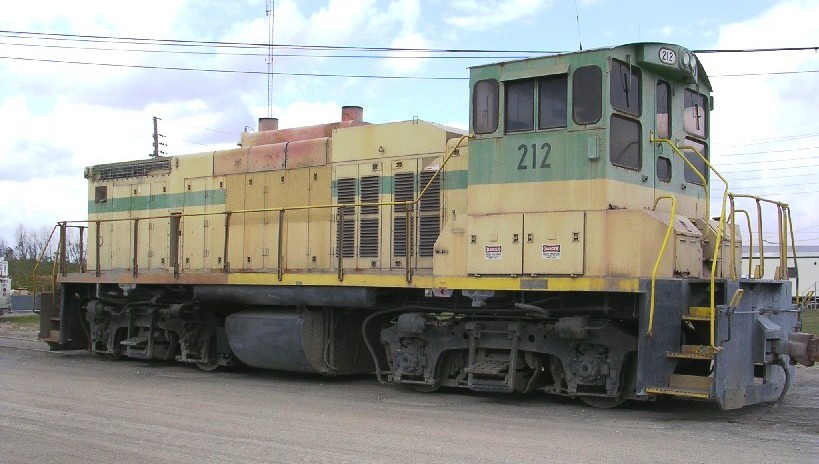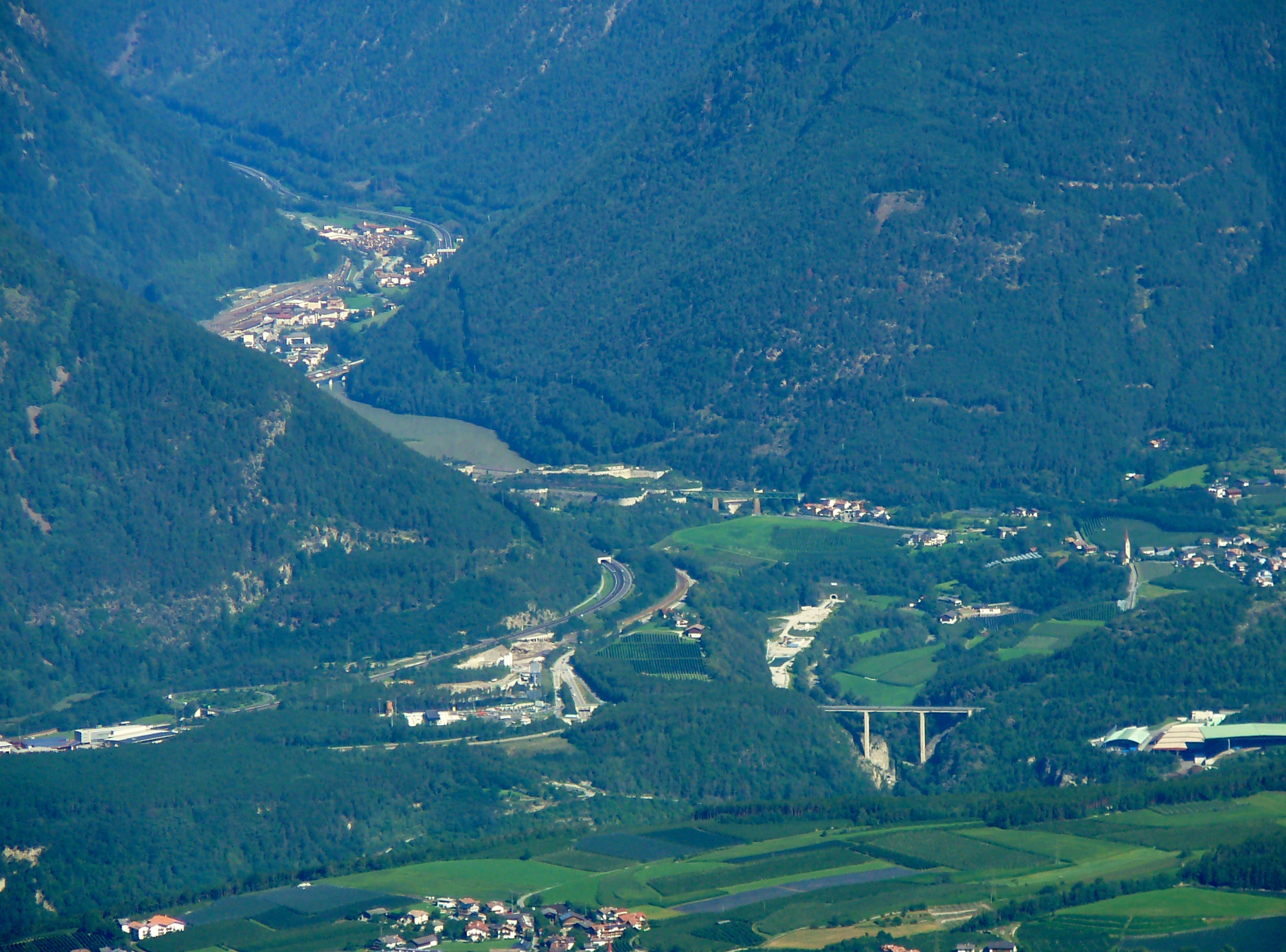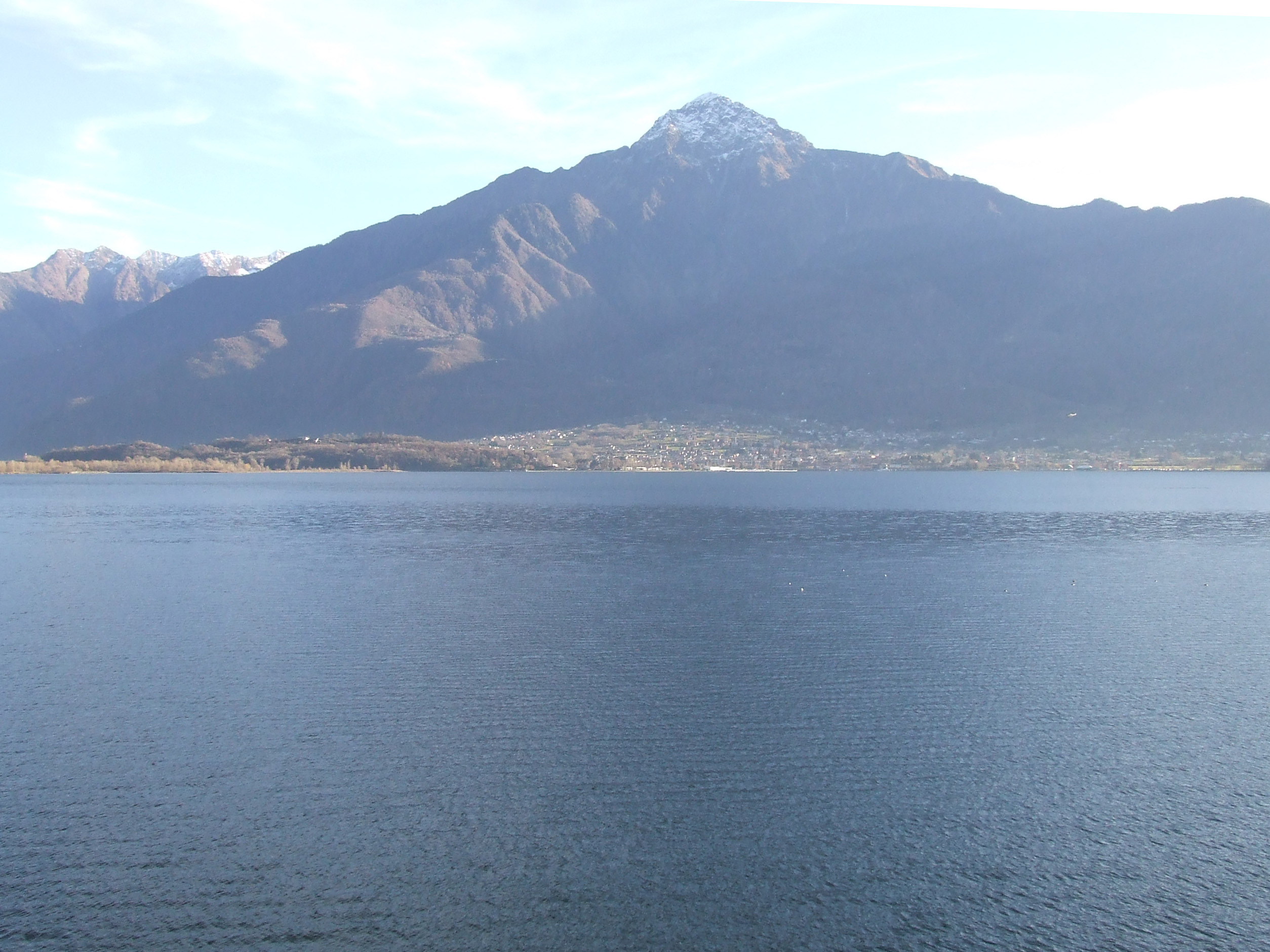|
FS Class E.430
The FS Class E.430 locomotives, initially classed as RA 34, were three-phase alternating current electric locomotives of the Italian railways. They were built for Ferrovia della Valtellina by Ganz and MÁVAG in 1901 and had a power output of 440 kW (about 600 metric horsepower) and a haulage capacity of 300 tons. One locomotive is preserved. History Class E.430 is the first example, worldwide, of an electric locomotive powered by three-phase current. It was built for Rete Adriatica (the Adriatic Network), which at that time operated the Ferrovia della Valtellina, by Ganz Works, for the electrical part, and by the Royal Hungarian State Machine Factory (MÁVAG), for the mechanical part. These were, at the time, the most advanced factories in the world in the electric railway sector. The locomotives were numbered 34.1 and 34.2 under the management of the Adriatic Network. Acquired in 1905 by the Ferrovie dello Stato, the numbering changed to 0341-0342 and in 1914 they were r ... [...More Info...] [...Related Items...] OR: [Wikipedia] [Google] [Baidu] |
Museo Nazionale Scienza E Tecnologia Leonardo Da Vinci
Museo Nazionale Scienza e Tecnologia Leonardo da Vinci in Milan, dedicated to painter and scientist Leonardo da Vinci, is the largest science and technology museum in Italy. It was opened on 5 February 1953 and inaugurated by Prime Minister Alcide De Gasperi. The museum, in the ancient monastery of San Vittore al Corpo in Milan, is divided into seven main departments: * Materials * Transport * Energy (including Thermal power station Regina Margherita) * Communication * Leonardo da Vinci, Art & Science * New Frontiers * Science for young people Each of these departments have laboratories, especially for children and young students. The Transport section is made up of four different parts: air, rail, water and Submarine Enrico Toti-S-506. Materials section The Materials section treats the life cycle of modern products from raw materials to recycling. Specific sections are dedicated to polymeric and synthetic materials and to basic chemical manufacturing. There is also a metal ... [...More Info...] [...Related Items...] OR: [Wikipedia] [Google] [Baidu] |
Direct Current
Direct current (DC) is one-directional flow of electric charge. An electrochemical cell is a prime example of DC power. Direct current may flow through a conductor such as a wire, but can also flow through semiconductors, insulators, or even through a vacuum as in electron or ion beams. The electric current flows in a constant direction, distinguishing it from alternating current (AC). A term formerly used for this type of current was galvanic current. The abbreviations ''AC'' and ''DC'' are often used to mean simply ''alternating'' and ''direct'', as when they modify ''current'' or ''voltage''. Direct current may be converted from an alternating current supply by use of a rectifier, which contains electronic elements (usually) or electromechanical elements (historically) that allow current to flow only in one direction. Direct current may be converted into alternating current via an inverter. Direct current has many uses, from the charging of batteries to large power sup ... [...More Info...] [...Related Items...] OR: [Wikipedia] [Google] [Baidu] |
Brenner Pass
The Brenner Pass (german: link=no, Brennerpass , shortly ; it, Passo del Brennero ) is a mountain pass through the Alps which forms the border between Italy and Austria. It is one of the principal passes of the Eastern Alpine range and has the lowest altitude among Alpine passes of the area. Dairy cattle graze in alpine pastures throughout the summer in valleys beneath the pass and on the mountains above it. At lower altitudes, farmers log pine trees, plant crops and harvest hay for winter fodder. Many of the high pastures are at an altitude of over ; a small number stand high in the mountains at around . The central section of the Brenner Pass covers a four-lane motorway and railway tracks connecting Bozen/Bolzano in the south and Innsbruck to the north. The village of Brenner consists of an outlet shopping centre (supermarkets and stores), fruit stores, restaurants, cafés, hotels and a gas station. It has a population of 400 to 600 (). Etymology Older, obsolete theo ... [...More Info...] [...Related Items...] OR: [Wikipedia] [Google] [Baidu] |
Switcher
A switcher, shunter, yard pilot, switch engine, yard goat, or shifter is a small railroad locomotive used for manoeuvring railroad cars inside a rail yard in a process known as ''switching'' (US) or ''shunting'' (UK). Switchers are not intended for moving trains over long distances but rather for assembling trains in order for another locomotive to take over. They do this in classification yards (Great Britain: ''marshalling yards''). Switchers may also make short transfer runs and even be the only motive power on branch lines and switching and terminal railroads. The term can also be used to describe the workers operating these engines or engaged in directing shunting operations. Switching locomotives may be purpose-built engines, but may also be downgraded main-line engines, or simply main-line engines assigned to switching. Switchers can also be used on short excursion train rides. The typical switcher is optimised for its job, being relatively low-powered but with a high ... [...More Info...] [...Related Items...] OR: [Wikipedia] [Google] [Baidu] |
Franzensfeste
Franzensfeste (; it, Fortezza ) is a ''comune'' in South Tyrol in northern Italy. It is named after the large Franzensfeste Fortress erected from 1833 to 1838 and Franzensfeste station is also known as an important railway hub. Geography Franzensfeste is located in the southern Wipptal valley on the Eisack river, about south of Sterzing and north of Brixen. The settlement is situated on the western side of the valley, at the ''Sachsenklemme'' narrow where it is only a few hundred meters wide, along with the Brenner Railway line and the state road SS12 while the Autostrada A22 (Brenner Highway), running elevated on the same side, pass through the lake in its northern part entering a tunnel on the opposite side; the state road cross than the Eisack river nearby the railway station due north. The valley is confined by the Zillertal Alps in the northeast and the Sarntal Alps in the southwest, rising up to the Tagewaldhorn peak at . History Origin Franzensfeste was founded r ... [...More Info...] [...Related Items...] OR: [Wikipedia] [Google] [Baidu] |
Bolzano
Bolzano ( or ; german: Bozen, (formerly ); bar, Bozn; lld, Balsan or ) is the capital city of the province of South Tyrol in northern Italy. With a population of 108,245, Bolzano is also by far the largest city in South Tyrol and the third largest in historical Tyrol. The greater metro area has about 250,000 inhabitants and is one of the urban centers within the Alps. Bolzano is the seat of the Free University of Bozen-Bolzano, where lectures and seminars are held in English, German, and Italian. The city is also home to the Italian Army's Alpini High Command (COMALP) and some of its combat and support units. In the 2020 version of the annual ranking of quality of life in Italian cities, Bolzano was ranked joint first for quality of life alongside Bologna. Along with other Alpine towns in South Tyrol, Bolzano engages in the Alpine Town of the Year Association for the implementation of the Alpine Convention. The Convention aims to promote and achieve sustainable developme ... [...More Info...] [...Related Items...] OR: [Wikipedia] [Google] [Baidu] |
Steam Locomotive
A steam locomotive is a locomotive that provides the force to move itself and other vehicles by means of the expansion of steam. It is fuelled by burning combustible material (usually coal, oil or, rarely, wood) to heat water in the locomotive's boiler to the point where it becomes gaseous and its volume increases 1,700 times. Functionally, it is a steam engine on wheels. In most locomotives, the steam is admitted alternately to each end of its cylinders, in which pistons are mechanically connected to the locomotive's main wheels. Fuel and water supplies are usually carried with the locomotive, either on the locomotive itself or in a tender coupled to it. Variations in this general design include electrically-powered boilers, turbines in place of pistons, and using steam generated externally. Steam locomotives were first developed in the United Kingdom during the early 19th century and used for railway transport until the middle of the 20th century. Richard Trevithick ... [...More Info...] [...Related Items...] OR: [Wikipedia] [Google] [Baidu] |
Railcar
A railcar (not to be confused with a railway car) is a self-propelled railway vehicle designed to transport passengers. The term "railcar" is usually used in reference to a train consisting of a single coach (carriage, car), with a driver's cab at one or both ends. Some railway companies, such as the Great Western, termed such vehicles "railmotors" (or "rail motors"). Self-propelled passenger vehicles also capable of hauling a train are, in technical rail usage, more usually called "rail motor coaches" or "motor cars" (not to be confused with the motor cars, otherwise known as automobiles, that operate on roads). The term is sometimes also used as an alternative name for the small types of multiple unit which consist of more than one coach. That is the general usage nowadays in Ireland when referring to any diesel multiple unit (DMU), or in some cases electric multiple unit (EMU). In North America the term "railcar" has a much broader sense and can be used (as an abbr ... [...More Info...] [...Related Items...] OR: [Wikipedia] [Google] [Baidu] |
Sondrio
Sondrio (; lmo, Sùndri; rm, Sunder; archaic german: Sünders or ; la, Sundrium) is an Italian city and ''comune'' and Provincial Capital located in the heart of the Valtellina. , Sondrio counts approximately 21,876 inhabitants (2015) and it is the administrative centre for the province of Sondrio. In 2007, Sondrio was given the Alpine Town of the Year award. History Formerly an Ancient Roman military camp, today's Sondrio was founded by the Lombards: in their language ''Sundrium'' meant "Exclusive property", referring to the status of free men (''arimanni'') of the holders of the city and the surrounding land. After the fall of the Lombard Kingdom in Italy, Sondrio became part of the Holy Roman Empire. The Capitanei of Vizzola, who controlled much of the Valtellina, had it in 1040 from the emperor Henry II. From 1310 to 1335 the city was involved in the war between the Guelph and Ghibelline factions of the nearby Como, and its war against Milan. After having resisted se ... [...More Info...] [...Related Items...] OR: [Wikipedia] [Google] [Baidu] |
Chiavenna
Chiavenna ( lmo, Ciavèna ; la, Clavenna; rm, Clavenna or ''Claven''; archaic german: Cläven or ''Kleven'') is a ''comune'' (municipality) in the Province of Sondrio in the northern Italian region of Lombardy. It is the centre of the Alpine Valchiavenna region. The historic town is a member of the Cittaslow movement. Geography Chiavenna is located about north of Milan and about northwest of Sondrio. The town is situated on the right bank of the river Mera about north of Lake Como. The river course leads up to Val Bregaglia in the east and the Swiss border at Castasegna. In the north, the Valle Spluga stretches up to Passo dello Spluga and the road to Chur in the Grisons. Chiavenna borders the following municipalities: Mese, Piuro, Prata Camportaccio, and San Giacomo Filippo. The municipality of Chiavenna contains the ''frazioni'' (subdivisions, mainly villages and hamlets) Campedello, Loreto, Pianazzola, and San Carlo. As of 31 December 2004, it had a population ... [...More Info...] [...Related Items...] OR: [Wikipedia] [Google] [Baidu] |
Colico
Colico ( Comasque: or ; la, Colicum) is a city in the province of Lecco, Lombardy, Italy. It is situated on the northern arm of Lake Como, where the river Adda enters the lake. Colico is the most important city in the northern part of Lake Como, which is often identified as its Colico branch. Colico is a local transport hub, with boats to Como and Lecco, as well as trains and roads to Milan (via the eastern shore of the lake, Lecco and Brianza), to Chiavenna, and eastwards to Bolzano, via Passo dello Stelvio. The Piona Abbey is located in the communal territory, in the Olgiasca peninsula. Geography Colico is dominated by Monte Legnone, at above sea level, and high foothills. Near Colico is an important natural reserve, the migration corridor of the Pian di Spagna (in the province of Como). The two main waterways of Colico are Inganna and Perlino; the river Adda is a natural boundary between the provinces of Como and Lecco. Main sights Forts *Fort Montecchio, a fort b ... [...More Info...] [...Related Items...] OR: [Wikipedia] [Google] [Baidu] |
Lecco
Lecco (, , ; lmo, label=Lecchese, Lècch ) is a city of 48,131 inhabitants in Lombardy, northern Italy, north of Milan. It lies at the end of the south-eastern branch of Lake Como (the branch is named ''Branch of Lecco'' / ''Ramo di Lecco''). The Bergamo Alps rise to the north and east, cut through by the Valsassina of which Lecco marks the southern end. The lake narrows to form the river Adda, so bridges were built to improve road communications with Como and Milan. There are four bridges crossing the river Adda in Lecco: the Azzone Visconti Bridge (1336–1338), the Kennedy Bridge (1956), the Alessandro Manzoni Bridge (1985), and a railroad bridge. Lecco was also Alpine Town of the Year in 2013. Elevated to province by decree of the President of the Republic of March 6, 1992, Lecco obtained the title of city on June 22, 1848. Known for being the place where the writer Alessandro Manzoni set "The Betrothed", the city is located in one of the vertexes of the Larian Triangl ... [...More Info...] [...Related Items...] OR: [Wikipedia] [Google] [Baidu] |






.jpg)


